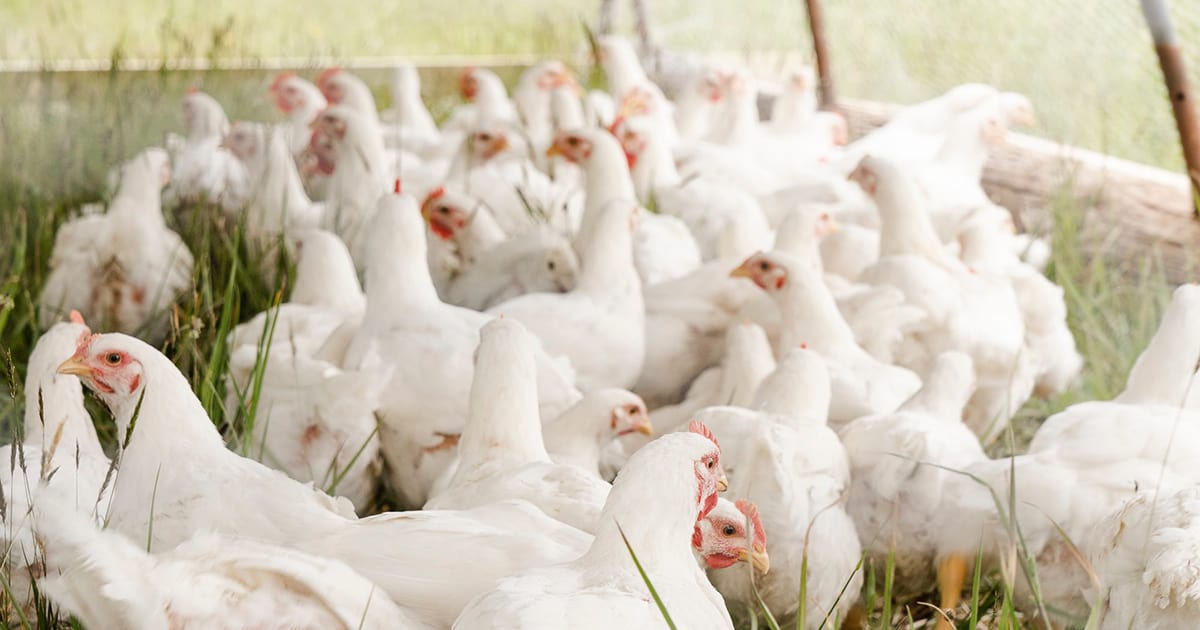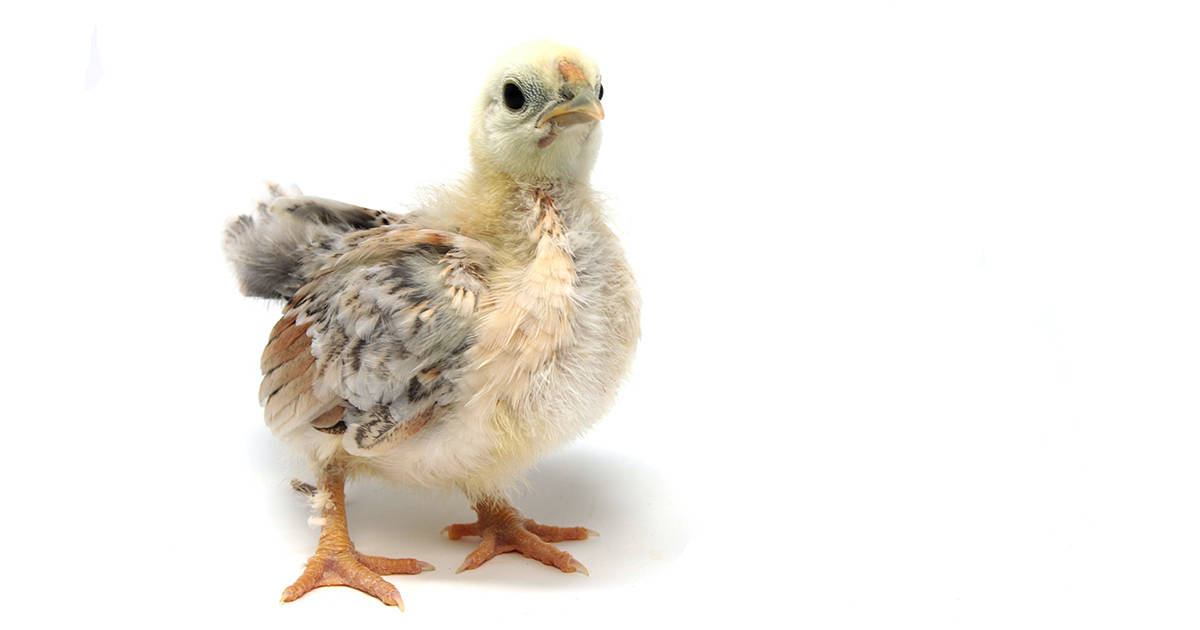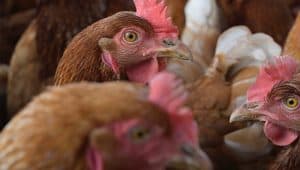During hot weather poultry of all types, ages and size have difficulty achieving a balance between body heat production and body heat loss, which causes problems for livestock farmers. Greater technological monitoring and forecasting is required as global temperatures increase and heatwaves occur more regularly.
As these factors escalate significantly, and if ventilation breaks down or stops out of hours, poultry can suffer, requiring intervention by those responsible for their welfare.
The body temperature of the broiler must remain very close to 41°C (106°F). If body temperature rises more than 4°C above this, the bird will die. [1]
Consumption of poultry meat and eggs has increased globally in past decades and growth is expected to continue due to population increases, greater individual consumption, urbanization, rising incomes in developing countries, affordability, low-fat content and few religious or cultural barriers.
In 2020 global poultry meat production stands at over 130 million tonnes yearly with over 70% raised in intensive industrial farming systems. Over time, this proliferation has dramatically influenced how chickens get from hatchling, to maturity, to market.

Changes due to climate
In 2018, the Intergovernmental Panel on Climate Change reported: “Temperature extremes on land are projected to warm more than Global Mean Surface Temperature… The number of hot days is projected to increase in most land regions…’”2 indicating that occurrences of extremely hot weather have a high likelihood to continue. For all farmers, this means an up to date weather forecast is vital. While long-range weather forecasts are becoming more reliable, poultry farmers have further considerations. Forecasts give a view of temperature in the shade but do not include local variations such as offshore breezes, local woodland, valleys or exposed ground. Most poultry houses ventilate with air exposed to direct sunlight, which will be hotter than that forecast. Also, they do not indicate what is happening to the internal climate and circumstances of the poultry which change on a daily basis depending upon flock size, breed and maturity.
Heat Stress Effects
Heat stress (and exhaustion) is one of the top causes of chicken fatalities, so knowing how to reduce this is important to preserving their health. Poultry Punch magazine states: “Heat stress is caused by various environmental factors such as sunlight, thermal irradiation, air temperature, humidity, characteristics of the bird e.g., breed, metabolism rate, the bird’s activity and thermoregulatory mechanisms as well as the housing conditions of the bird.” [3]
Birds can acclimatize to high temperatures, which becomes easier as they grow older; adult birds will adapt in about five days. However, the issue is more problematic when heatwaves occur unexpectedly and house managers are caught off guard.
When temperatures rise, a chicken cannot sweat to cool itself. Instead, it loses body heat through four different ways; radiation, conduction, convection and evaporation. They cannot dissipate excess internal heat through their plumage, only through their combs, wattles, beaks and feet. As heat increases, they start by opening their mouth and pant with their beak open; stand holding their wings away from their sides; they flap and squat closer to the ground to make a dust bath; their appetite decreases substantially in order to avoid excess heat production and their water consumption greatly increases.
Depending upon the maturity of the bird and the duration of exposure, if heat production becomes greater than the maximum heat loss either in intensity (acute heat stress) or over long periods (chronic heat stress), poultry becomes lethargic and droopy with a likelihood of greater mortality rates.
…there is a need to re-evaluate the management of poultry and equipment used in hot weather so that heat stress is minimized. Heat Stress not only causes suffering and death in the birds but also results in reduced or lost production that adversely affects the profit from the enterprise. [1]
It is therefore vital to remove accumulated heat and maintain the best environment, reducing the body temperature with effective control of ventilation, with water sprinklers or foggers, while providing adequate nutrition and cool water to allow birds to re-hydrate. For ventilation systems, there is always a trade-off between the level of control and effectiveness and the cost. Because heat levels can build rapidly if ventilators malfunction, an independent temperature monitoring system should always be provided, especially for times of day when fewer staff are on site.
Temperature Monitoring Solutions
The Welfare of Livestock (England) Regulations 1994, states: “Where the automatic equipment includes a ventilation system, the system shall contain an alarm which will give adequate warning of the failure of that system to function properly (which alarm will operate even if the principal electricity supply to it has failed) …” [4] therefore, it is mandatory to have an alarm to warn of a ventilation failure.
Traditionally, thermometers have been the most common way of assessing temperature and are both inexpensive and easy to install. However, they do not provide information when staff are absent, ventilation has broken or there is a power cut. They therefore do not meet the requirements stated above.
A more reliable alternative is to use electronic data loggers. These devices automatically record over time, collecting data on a 24-hour basis, and can be left unattended for the duration of the monitoring period.
But not all electronic loggers can provide an automatic alarm and so the type used should be selected with care. Wireless data loggers are a popular solution and are suitable for use at larger facilities where a wireless network is available, with back-up power so that the network stays up even if the ventilation system shuts down.
Data monitors that communicate via the mobile phone network will be an even better solution for many poultry farmers. These can be configured with both high and low-temperature alarms, set by the user, with alerts sent via SMS to several recipients simultaneously. This allows a problem to be dealt with immediately before expensive losses occur. Each monitor can operate for up to a year on a single set of batteries, so very little maintenance is required. The EasyLog EL-SMS-2G-TP is an example of such a device.

Conclusions
Safeguards are needed to protect farmed poultry from excessive heat. These must protect against malfunctions in ventilation and cooling systems, be independent of those systems, and provide an immediate warning to members of staff before the onset of heat stress or fatalities in their flocks. Electronic monitors that communicate via mobile phone networks are an ideal solution to this requirement.
References:
1) UK Department for Environment, Food and Rural Affairs. (2005a, p.2(d1)), (2005b, p. 1), (2005c, p. 2). Heat Stress in Poultry – Solving the Problem p. 1
2) IPCC Summary for Policymakers 2018 (p. 7, B.1.2)
3) Tiwari, Dr. Richa, BVSc & AH, MVSc. (15 May 2020) ‘Impact of heat stress in poultry production: mitigation strategies and approaches to overcome the future challenges’, The Poultry Punch – Monthly Magazine
4) The Welfare of Livestock (England) Regulations 1994 Additional Conditions for Intensive Systems, (S4, P2, s3(3)(a))




